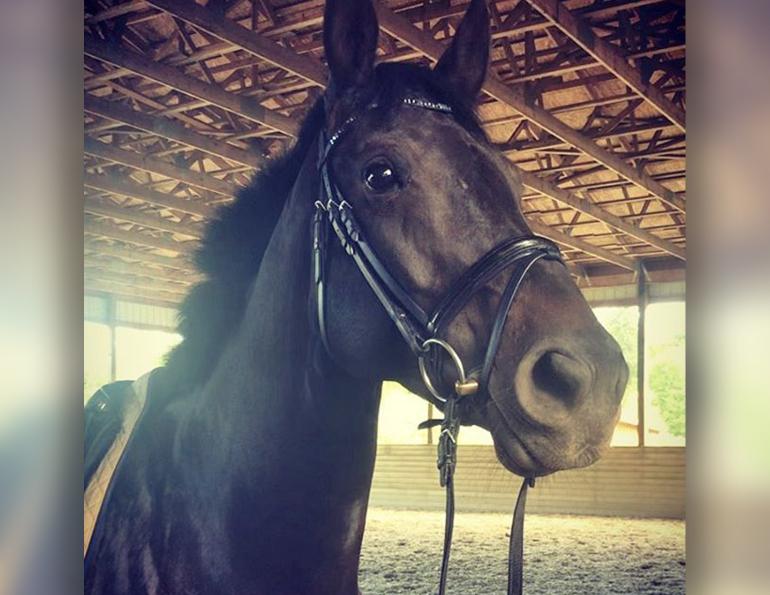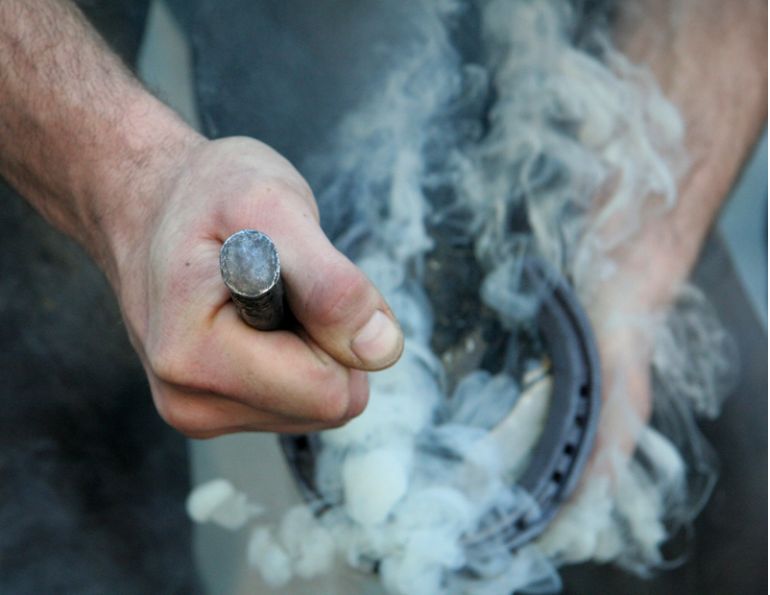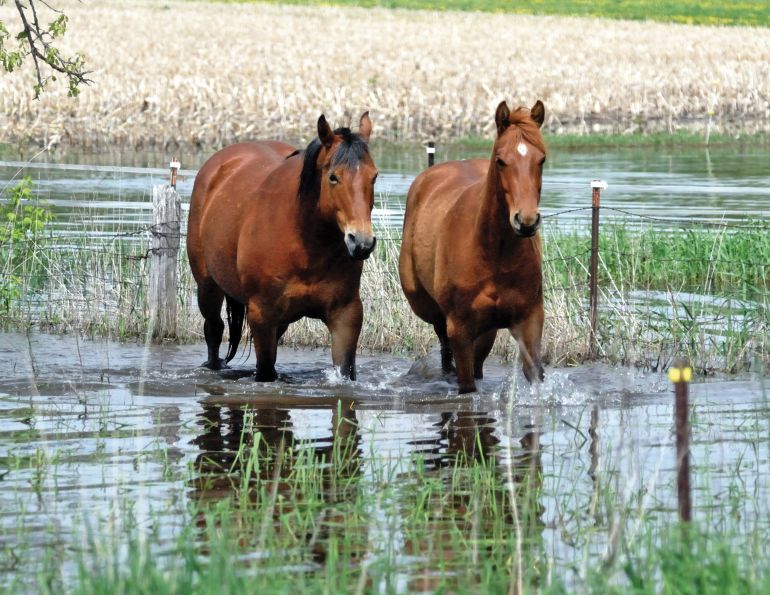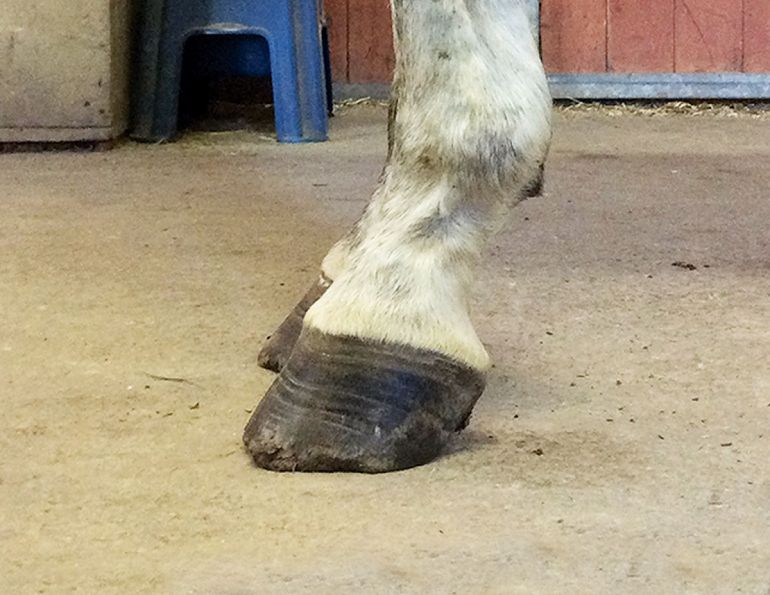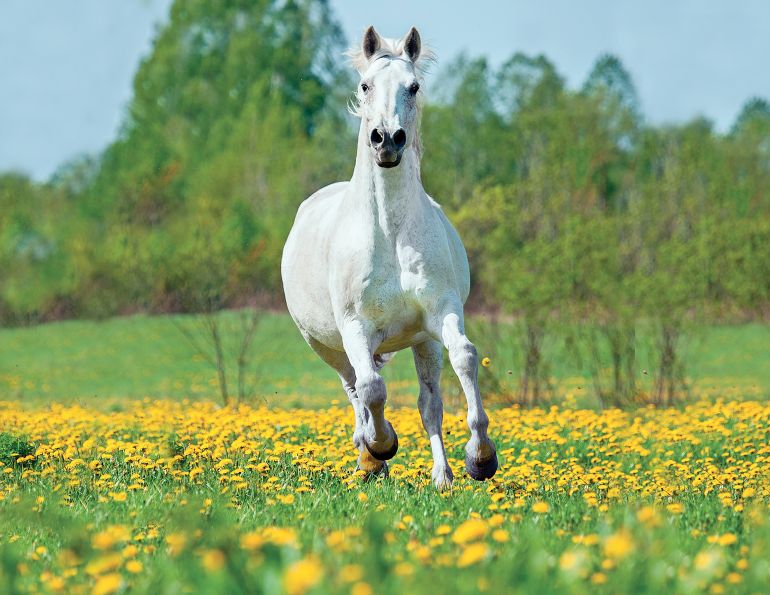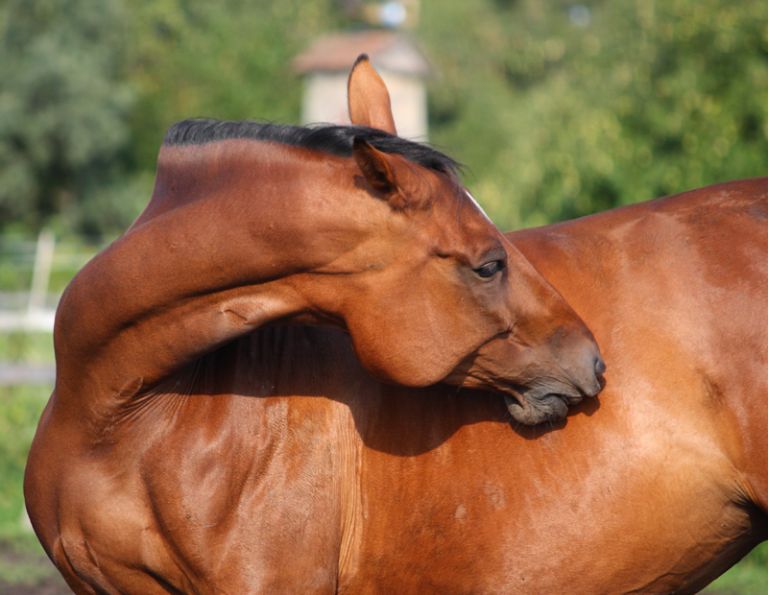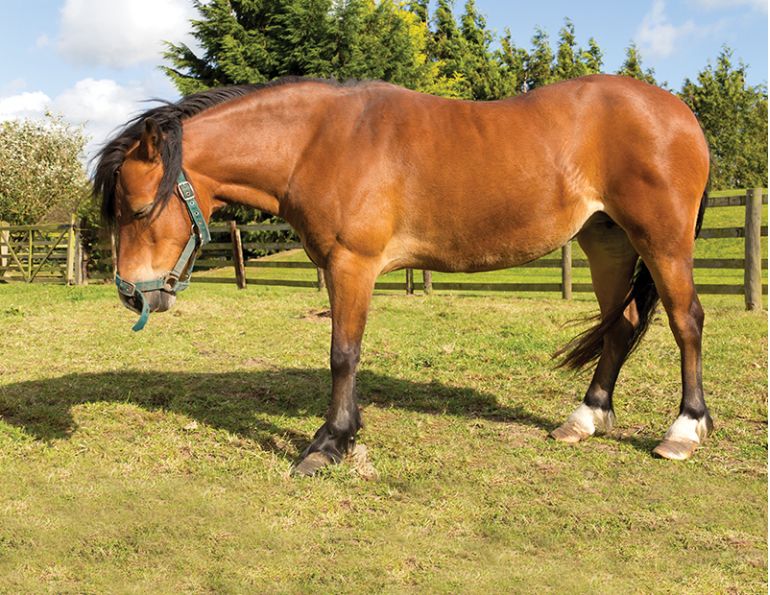By Tania Millen, BSc, MJ
Grooming is an enjoyable way to bond with your horse, and most horses love to be fussed over, but cleaning a male horse’s sheath is an unpleasant chore that owners and riders tend to avoid. From potentially being kicked, to lack of knowledge or squeamishness, those with geldings and stallions often shirk the task altogether. However, veterinarians agree that cleaning and inspecting a horse’s sheath is a necessary and regular part of maintaining their health.
Cori Stephen, DVM, owner and one of the veterinarians at Nechako Valley Animal Health Services near Prince George, BC, advises, “The purpose of cleaning a horse’s sheath is to inspect it and make sure it’s healthy. There are lots of diseases that can occur to this part of anatomy – cancers such as squamous cell carcinoma, viruses such as the papilloma virus and a strain of herpes virus, as well as bacterial and fungal infections. When you invest in a veterinarian to clean the sheath, you’re paying for more than just the procedure, you’re investing in knowledge.” She points out that the whole sheath area collects debris from horses rolling in shavings, being ridden in dirt arenas, and playing outside in the mud, so it’s important to clean the sheath to minimize debris that can perpetuate infections.
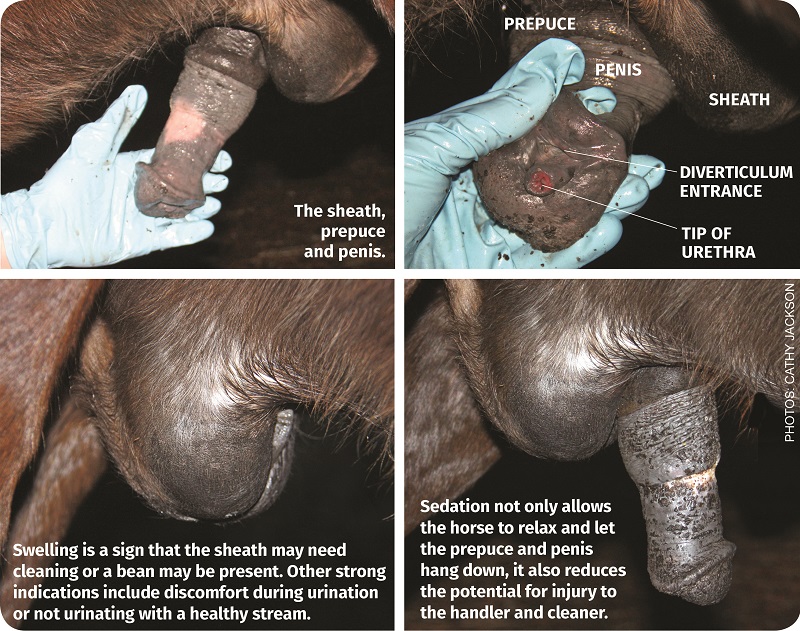
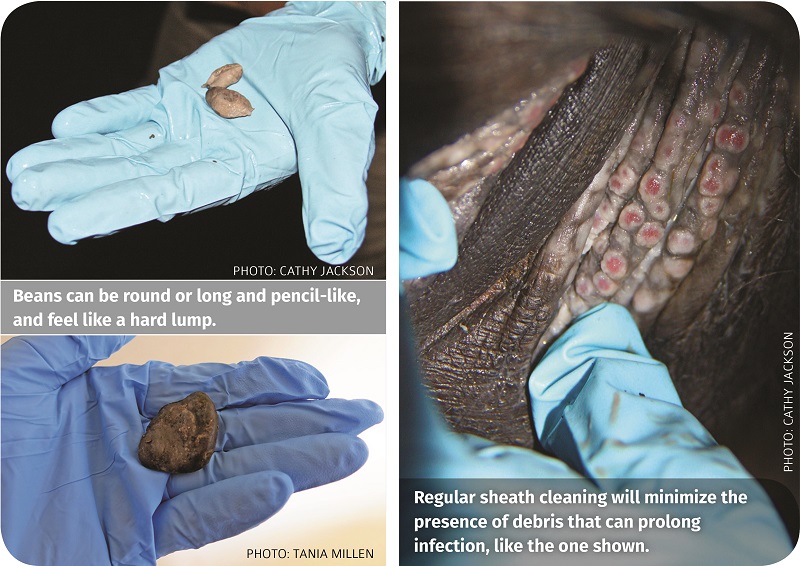
To understand the necessity of sheath cleaning, it’s useful to know a bit more about male horses’ private parts. The sheath includes three anatomical parts - the outer sheath, the prepuce which looks like folds of skin, and the penis – and all three require maintenance. To keep the sheath lubricated and allow extension and retraction of the prepuce and penis, male horses naturally produce sebum from sebaceous glands within their sheath. When sebum combines with dirt, natural bacteria and dead skin cells, it forms sticky, smelly, grey-black gunk called smegma that coats the inside of the sheath, the area between the sheath and prepuce, plus the penis. Dr. Stephen explains, “Smegma protects the area from getting chaffed during exercise. Often there are large peeling flakes of skin on the penis. That’s just the body shedding cells. It’s normal.”
Related: How Well Do You Know Your Horse? 10 Ways to Get Better Acquainted
During sexual arousal and activity, smegma is naturally dislodged from a wild stallion’s penis, while domestic breeding stallions usually have their sheaths cleaned pre- and post- breeding. But many North American horses are gelded, which prevents natural sexual activity. Since they’re not using their penis for its intended purpose, sheath cleaning and inspection are required.
But the fun doesn’t end there. Another important part of male horse anatomy is the urethral diverticulum, which is a small pouch located beside the urethra at the end of the penis shaft. Dr. Stephen says, “What we call a ‘bean’ is a waxy-like yellow, grey blackish conglomerate of urine, calcium carbonate, debris from the environment, and sloughed cells that create a plug in the diverticulum of the penis.” Beans feel like a hard lump where there shouldn’t be one, and can be the size of a quarter, potentially restricting urination. Some are round, some long and more pencil-like, but none are supposed to be there. Dr. Stephen continues, “Beans should be removed. They’re often a source of discomfort, as they take up space in a place where there’s not supposed to be space, and can create pressure sores and changes to the stream of urine.”
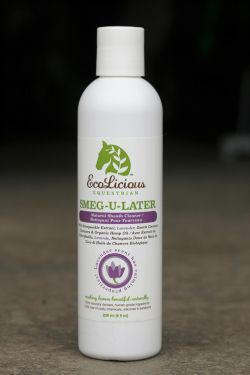
This all-natural sheath cleaner was developed by EcoLicious Equestrian to be gentle yet effective with coconut-derived cleansers and honeysuckle extract. SMEG-U-LATER leaves behind a clean lavender smell, and can also be used to clean delicate skin in other areas, such as around nostrils and eyes.
So how does the horse owner know if their horse’s sheath needs cleaning?
Dr. Stephen advises that if the horse’s sheath is obviously dirty – for example smegma visibly hanging from the sheath, prepuce or penis – and hasn’t been cleaned in 12 months, then it probably needs cleaning and inspection. She further notes that if a gelding no longer urinates with a healthy stream, there’s discomfort during urination, or the sheath or penis is swollen, then the sheath may need cleaning and inspecting, or a bean may be present.
Related: Clipping 101
For safety and efficacy, Dr. Stephen advises that horses should be sedated during sheath cleaning. For starters, sedation reduces the potential for injury to those doing the checking and cleaning. Just as importantly, sedation relaxes the cremaster muscle, which hides the penis in the sheath, and which must relax for the prepuce and penis to hang down and be visible. Most horses will automatically retract their penis when their sheath is handled, so sedation allows the horse to have a positive experience, rather than a penile tug-o-war that may lead to injury of the horse or cleaner. Rather than sedate specifically for sheath cleaning, it’s common for veterinarians to check and clean sheaths when horses are already sedated for another procedure, such as having their teeth floated. However, for those who are keen to roll up their sleeves, sheath cleaning and bean removal is something that riders and owners can do themselves, and instructions are provided below.
Ultimately, the sheath is an important part of anatomy that needs to be included in the horse’s regular health maintenance program, and an annual veterinary inspection will help ensure that all the parts remain healthy.
Six-Step Sheath Cleaning and Bean Removal
1 – Sedate for safety. Speak to a veterinarian about sedation. A properly sedated horse will relax and hang all their parts out, which helps prevent injury to the handler and cleaner. Even sedated horses can kick, so keep an eye on the horse and operate from a safe location.
2 – Consider hygiene. Horses carry medically resistant staphylococcus infections that can pass to humans, while humans carry diseases that can transfer to horses, so it’s important to prevent disease transfer when handling a horse’s sheath. The best way to maintain hygiene is to wear disposable gloves and use the clean hand/dirty hand routine described below.
3 – Prepare. Collect a bucket of warm water, a bottle of liquid Ivory™ dish soap, cotton squares, and some disposable gloves. Put the gloves on and some cotton in the water. Decide which will be the clean hand and which will be the dirty hand. Put the clean hand in the bucket of water to collect a piece of cotton. Pass the cotton from the clean hand to the dirty hand, and put the dirty hand in the sheath. Once the cotton is dirty, discard it and repeat.
4 – Rinse, lather, rinse. With water and cotton, use the clean hand/dirty hand procedure to remove flaky debris that’s easily dislodged. Once the loose debris is removed, place a small amount of soap in the dirty hand and use it to degrease the sheath and break up more debris. Repeat as necessary. It’s important to maintain the area’s natural flora, so the sheath does not need to be spotlessly clean. Once it’s clean enough to inspect, rinse the sheath with warm water to rid the area of soap.
5 – Inspect and remove beans. Visually inspect and manually feel for a bean (hard lump) in the diverticulum at the end of the penis. If a bean is found, lever it out of the space. At this point, veterinarians will also inspect and palpate the sheath, prepuce and penis for tumours, abrasions, and injury.
6 – Pat dry with clean, damp cotton.
Related: Use Clippers for the Perfect Tail
Related: Horse Care Through the Seasons
Main Photo: Shutterstock/Nicole Ciscato





